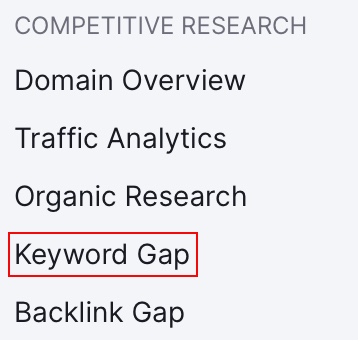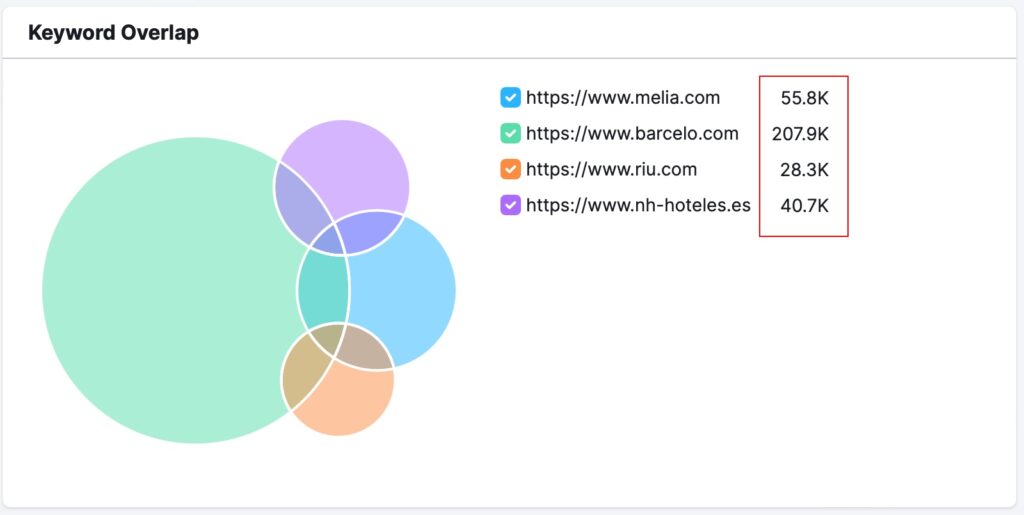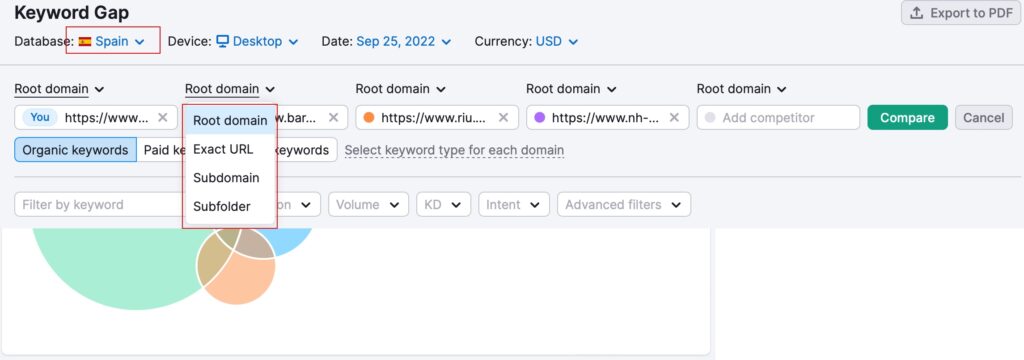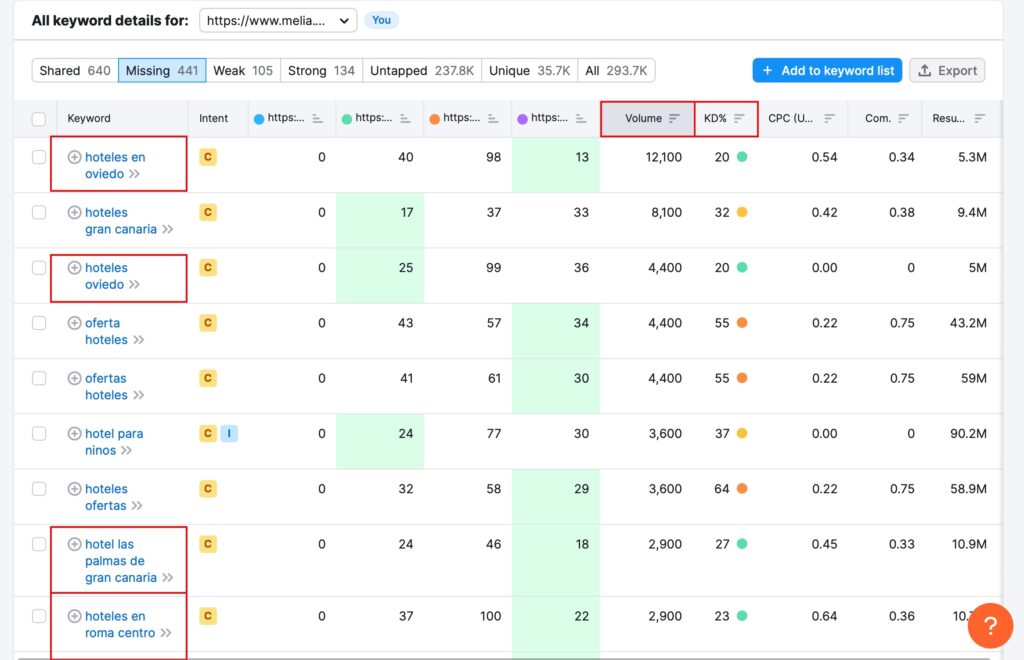
Pablo Herrera
Head of SEO & Content
Studying the SEO competence is a must if we want to prevent our competitors from gaining ground on Google. Also if we want to be inspired and find new strategies that, perhaps, we would not have thought of.
Sometimes, it can even work to feed our ego. It is never good to rest on your laurels, but checking that we are doing things right and our competitors are not can give us a little extra motivation, that is never a bad thing.
In our article on SEO or SEM, we already told you that a 100% paid strategy can also work. Perhaps our competitor has discarded the organic channel and is investing only in a Google Ads or social ads campaign.
In that case, it can also be interesting to study what keywords they are bidding for. We can effectively compete with them from organic and steal market share with a clear advantage. If we manage to rank in the top positions, we will always be there, while the competitor will only appear when he wins his bid with respect to the rest of the advertisers.
Of course, if we both appear at the same time, ads usually have a higher CTR, as they are placed above the organic results.
But, before starting with the way to analyze SEO competition, let’s analyze the meaning of the term. It is not a trivial matter, depending on who we consider our competition, the strategy can change completely.
Which is our organic competence?
índice

There are two options when defining who our SEO competition is. First, we can consider our organic competition to be our business competitors. That is, those other companies that are in the same business as us and for which we compete for the same customers.
For example, if we have to position the website of a hotel, our competition would be, first, other hotels and tourist accommodations in our area and, second, other hotels and accommodations in other similar tourist destinations.
If we run the website of a cinema chain, our direct competition would be other cinema chains, but also television or streaming services.
However, not always (in fact, rarely) our business competitors are our competitors at the organic level. By means of different SEO tools such as SEMrush or Ahrefs (or manually) we can check which domains are competing for our same keywords.
For this second definition to make sense, we have to be working on our SEO content strategy for some time. Otherwise, our list of organic competitors may not have much relevance and the keywords we have in common may not be significant.
Next, I will go into more details about what it entails to choose one or the other.
Choosing real-world physical competitors

In this case, the first thing we must be clear about is who our main competitors are. In any digital strategy, you always have to define and narrow it down. We may come up with a list of thirty or forty major competitors, but we should focus on four or five.
If we have doubts about which ones to choose, my first step would be to check which of these physical competitors are more powerful in SEO or, otherwise, in SEM.
If we find physical competitors that are also SEO competitors we have a win win. Without a doubt, they are our target.
In this case, our goal is to weaken the company’s online presence. To do so, we must consider the conversion funnel. They may have positioned more general topics that do not seem to have much to do with the service or product we sell in common, but they can be good keywords for the first phase of acquisition.
We can also see content related to positioned services and products that we do not sell. In the first instance, I would not prioritize competing here. However, I have occasionally met clients who want to weaken their competition also by making them reduce their advantage for these other non-common services.
In the end it is still a strategic decision. For me, I would always prioritize the early stages of the conversion funnel to attract traffic and services that are in common, as this will be what generates the most sales and makes the SEO strategy profitable.
Even if we choose the next option, the one of competing with the real organic competitors, always keep an eye on the business competitors. We never know when they might start working on their digital strategy.
Choosing SEO competitors

This option, to start with, is my favorite. If we are working on SEO, let’s see who is working on our same terms. In fact, we can find competitors that we didn’t even know existed.
We will see in our tool which pages have a stronger relationship with ours. What these tools measure are not the keywords used per se, but those that appear in the SERPS, i.e. in Google results.
If a page is very similar to ours but has practically no indexed content, it will not appear.
This is good for us, because we will only see which pages are in real-time competing against us for users. We will also be able to see what keywords they use and we do not, to find new positioning opportunities.
This type of competition is our real competition in organic terms. If they have nothing to do with real competitors it can mean two things:
- Competitors are not performing well.
- Our keyword strategy is not focused on what it should be.
In case we find ourselves in option two, we would have to look at the business competition point and completely change our strategy, starting with a new keyword research.
How to study SEO competition?

For the following steps I will choose SEMrush as a reference, although there are also other paid tools with similar functionalities. So far, I don’t know of any free tool that allows you to perform this study in a more complete way.
With Ubbersuggest you can do a basic study of keywords to see which competitors have each keyword, although you can not generate the competitors directly by entering your domain as with the paid tools.
Or, you can create yourself the list of competitors you want to compare and see what happens. This option, without including us, is a very good idea to start our organic strategy if we have not worked on SEO so far.

Let’s do a practical exercise by checking four important Spanish hotel chains: Meliá, Barceló, Riu and NH. We start by going to the competition research section of SEMrush and there we select the keyword gap.
Anyway, I recommend you investigate in depth all the options in this section.
Check the keyword gap

The next step is to introduce the four competitors’ domains, five if we want to be included. Here it is important to check that you have selected organic keywords (as I mentioned before we can also compare the paid keywords) and the root domain, although there may be cases where you are only interested in a subfolder or a subdomain.
For example, if our business is national and we compare with a large multinational, we will only be interested in the subdomain they use for Spain.

Similarly, here we can compare by country. As we are in Spain, we have selected Spain. To make it easier we have the root domain for all and for Spain, although as they are multinational companies we could also do it with their Spanish subdomain.
Once we have the four, we click on compare. These are the results:
To begin with, we see that Barceló quintuples the results of RIU or NH and triples those of Meliá. Curiously, if we look at turnover data, number of rooms or number of establishments, Barceló does not occupy the first position in any of them.

That is why I mentioned earlier that the main organic competitors do not necessarily have to compete with the main competitors in terms of business.
Taking a second look, we can see which keywords are shared by the four competitors, those that are missing from the one we have placed in first place (if we enter ourselves we have to place ourselves first) or the keywords used by all the others except us.
In this case we have put Meliá first, so we see that there are 406 keywords shared by the four chains and 206 shared by the other 3 that Meliá does not have. If I were Meliá, I would start searching on those 206 since if they share them all it looks relevant.
Eliminating competitors one by one, we can also see which keywords the other two have and we don’t, for example.
If we want to see all the ones that our competitors use and we don’t, we can click on “Unused”.
We can continue playing and seeing variables comparing different competitors and finding what we are most interested in.
Volume, Keyword difficulty and other variables

It is time to have a look, within the different keywords available. At this point I always recommend paying special attention to the volume, but also to the keyword difficulty.
In this example, we are looking at the missing keywords that all our competitors have and their current position in the SERP. Of course, it is also important to understand the business here.
We notice that we are not positioned in Gran Canaria but also that it is practically impossible to position that keyword. If we see that keywords such as hotels Oviedo or hotels in Algarve Portugal all inclusive are easier to position.
Meliá has a hotel in Oviedo, the Meliá de la Reconquista. On the other hand, so far, it does not yet have a hotel in the Algarve. So what we would be interested in positioning at first glance is “hotels Oviedo”. To do this we can optimize the texts but also work the backlinks, for example, being careful not to fall into Black Hat SEO.
The keyword “hotels near my location” suggests that competitors are using a search engine with geolocation, so it is also interesting to consider these things to include it if necessary.
Step by step, we are looking for and selecting those results that we are interested in positioning at a business level and that are feasible. Especially important are those results that competitors have among the top ten positions, because otherwise they will bring virtually no organic traffic.
It is a long process, but also a nice one, which helps us to know more thoroughly what our SEO competitors are positioning and gives us ideas to improve our results.


